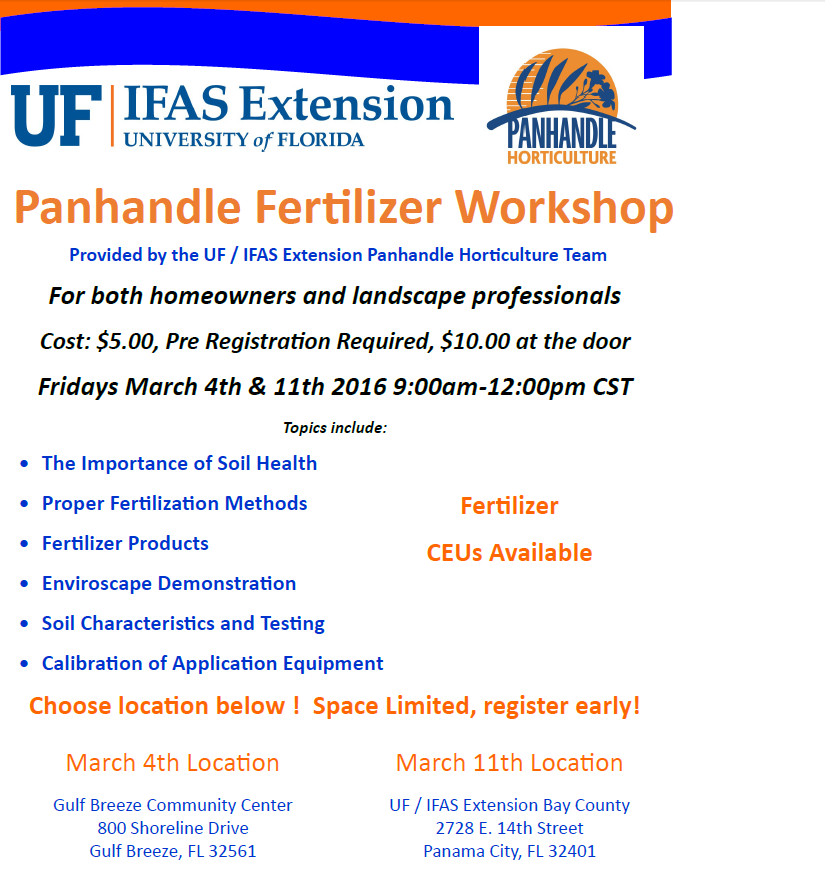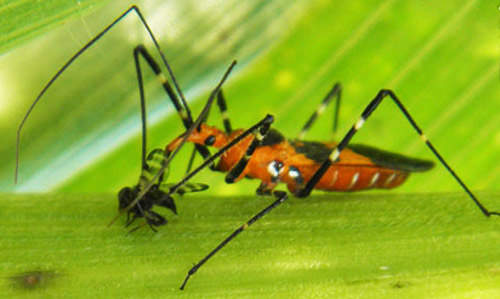
by Matthew Orwat | Apr 7, 2016
This spring, most garden plants are putting on lots of tender new growth. The lush foliage is like a free lunch to aphids, whiteflies, mealybugs and thrips. Before broad spectrum insecticides are used to control these pests, consider the impact on beneficial insects. Insecticides that don’t measurably harm predatory beneficial insects include insecticidal soaps and all season horticultural oils, which kill soft-bodied insect pests at application. Here are several common beneficial predatory and parasitic insects that help keep the pests at bay.
Assassin Bug Zelus longipes
Assassin bugs are predators of several leaf feeding and sap sucking insects including the fall army worm and the Asian citrus psyllid. They trap their prey by holding onto it with their forelegs and secreting enzymes into the prey to dissolve the interior tissue. Then they ingest the dissolved tissue.
Lady Bug or Lady Beetle
These insects most commonly feed on aphids, most insect eggs, whiteflies, small caterpillars, scale and mealybugs. They provide a measurable benefit to gardens since they are such generalized feeders. The Lady Beetle larva look substantially different from the adult stage.
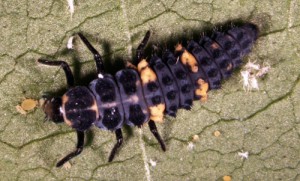
Third instar larvae of Hippodamia convergens. Photograph by Luis F. Aristizábal, University of Florida
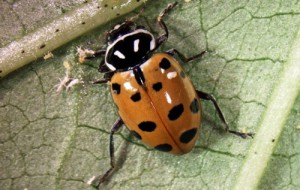
Newly emerged adult Hippodamia convergens showing typical body markings. Photograph by Luis F. Aristizábal, University of Florida.
Soldier Bug
A different but closely related species of the stink bug, this predator uses its piercing / sucking mouthparts to feed on larval beetles and caterpillars.
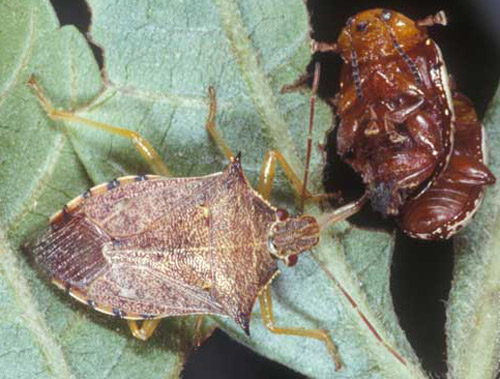
Dorsal view of an adult spined soldier bug, Podisus maculiventris (Say), feeding on a mating pair of sumac flea beetles, Blepharida rhois (Forster) (Coleoptera: Chrysomelidae). Photograph by Lyle J. Buss, University of Florida.
Lacewings
The green and brown lacewing is often found around aphid infestations. The larva is the major predator, they make the biggest dent on aphid populations. In addition to aphids, lacewings also feed on scale, mealybugs and several species of insect eggs.
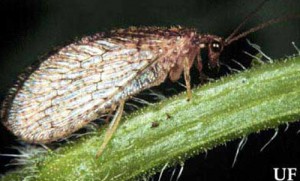
Adult brown lacewing (Neuroptera: Hemerobiidae). Photograph by University of Florida.
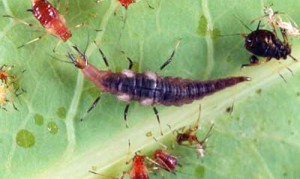
Larva of a brown lacewing (Neuroptera: Hemerobiidae) preparing to attack and feed on an aphid. The black-colored aphid to the right was probably parasitized by a wasp. Photograph by Lyle J. Buss, University of Florida.
Predatory Gall Midges
This aphid predator is easily overlooked because it is so small, and resembles the flower fly. They also feed on scale, thrips and mites.
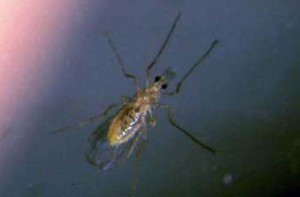
Adult of the predatory gall-midge, Feltiella acarisuga (Vallot). Photograph by David R. Gillespie, Agassiz.
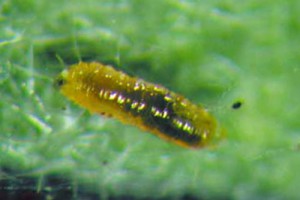
Larva of the predatory gall-midge, Feltiella acarisuga (Vallot). Photograph by Lance S. Osborne, University of Florida.
Flower Flies (Hover Flies)
Flower Flies actually resemble honeybees or bumblebees. People often run from them! The adult is an important pollinator for many crop species and feeds on nectar and aphid honeydew. This time it’s the larva which is predatory and is a voracious feeder of aphids. Large concentrations of larvae substantially reduce aphid populations in aphid infested gardens and fields.
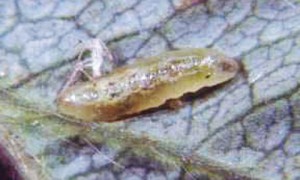
Larva of Allograpta obliqua (Say), a hover fly. Photograph by James F. Price, University of Florida.
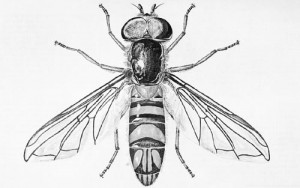
An adult male hover fly, Allograpta obliqua (Say). Graphic by Division of Plant Industry.
Parasitic Flies
There are many types of parasitic flies which parasitize a variety of insect pest species. They may inject their eggs into the host, or lay the egg on the surface of their host. Usually they are very small and not noticeable.
Parasitic Wasps
Most parasitic wasp species are tiny, fast and hard to notice. The average gardener is not aware of their rather plentiful existence. They are a common killer of grubs, caterpillars, whiteflies and aphids. They either insert their eggs into the organism or lay eggs on the surface of their host.
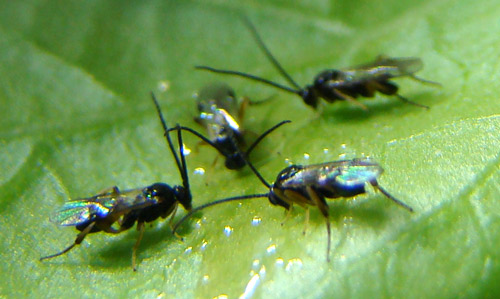
A group of adult Cotesia congregata (Say) wasps feeding on honey solution placed on the underside of a tomato leaf. Photograph by Justin Bredlau, Virginia Commonwealth University.
Big Eyed Bugs and Minute Pirate Bugs
While big eyed bugs and minute pirate bugs are not related, they perform similar functions in gardens and agricultural systems by feeding on chinch bug nymphs, psocids, leafhoppers, aphids, thrips, and mites. They are found in variety of ecosystems and do their job anonymously.
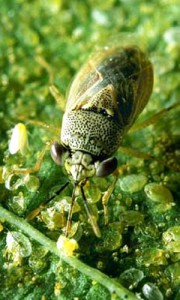
Adult bigeyed bug, Geocoris sp., feeding on a whitefly nymph. Photograph by Jack Dykinga, USDA
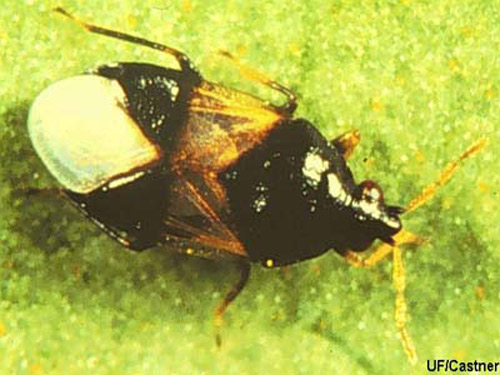
The minute pirate bugs are black with white markings. They prey on many small insects and eggs, including thrips. About 70 species exist in North America. Photograph by James Castner, University of Florida
References:
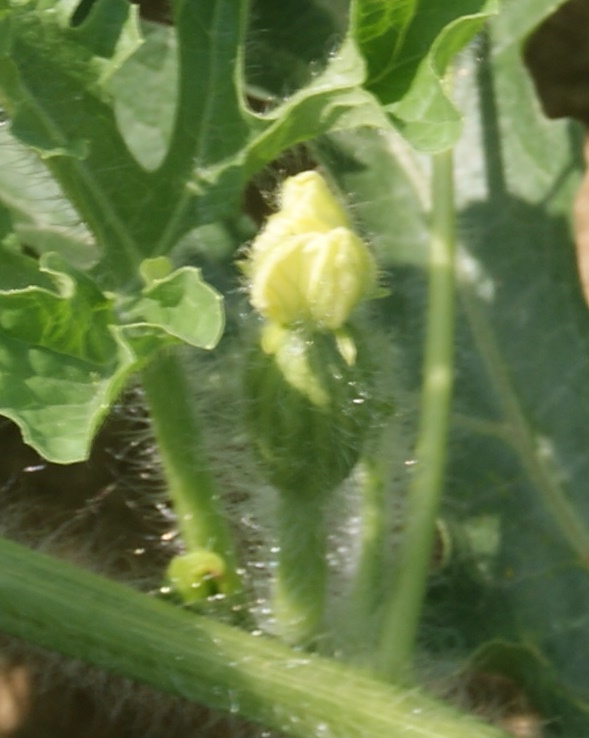
by Matthew Orwat | Mar 11, 2016
With weather warming up and daylight savings time right around the corner, we are in the midst of prime time for planting spring vegetable gardens. Gardeners routinely growing vegetable gardens should note that it is best to rotate plant families when planning a vegetable garden. See the table below to determine which families should be rotated.
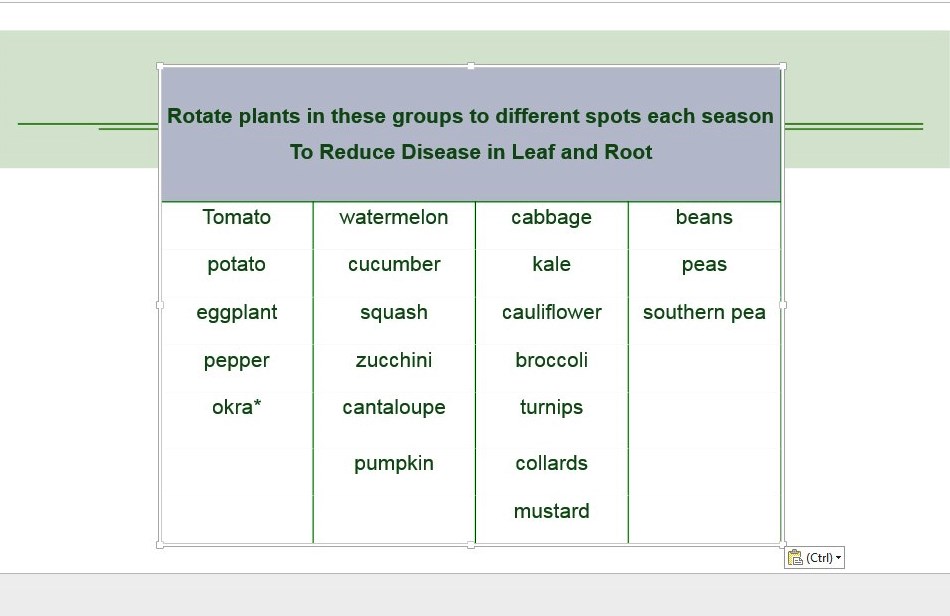
* okra is not a member of the solanaceae, but may be included as part of the solanaceae rotation
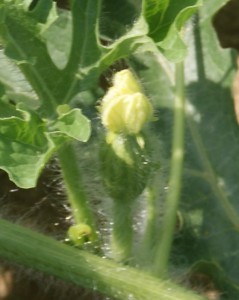 Vegetable gardens should be located on sites receiving at least 6 hours of sun per day, consisting of well-drained soil rich in organic matter. Since most Florida soils are low in organic matter, composted organic matter should be added before or at planting time. Uncomposted organic matter should be mixed into soil one month before planting. Vegetable garden pH should be between 5.8 and 6.3 to maximize absorption of nutrients. If it is lower, addition of agricultural grade lime or dolomite will be necessary. Obtain a soil test from your local extension office to determine if liming is needed.
Vegetable gardens should be located on sites receiving at least 6 hours of sun per day, consisting of well-drained soil rich in organic matter. Since most Florida soils are low in organic matter, composted organic matter should be added before or at planting time. Uncomposted organic matter should be mixed into soil one month before planting. Vegetable garden pH should be between 5.8 and 6.3 to maximize absorption of nutrients. If it is lower, addition of agricultural grade lime or dolomite will be necessary. Obtain a soil test from your local extension office to determine if liming is needed.
Once soil test results are available, fertilizer amounts will be able to be determined. Many gardeners use commonly available fertilizers such as 10-10-10 or 8-8-8, with micro nutrients, following directions on the package to determine the amount to apply. The soil test will determine if phosphorous is needed, so follow those results when choosing a fertilizer. When fertilizing, broadcast the fertilizer over the garden area at pre-plant, then apply as needed throughout the season. This will likely consist of 2-3 light applications applied beyond the reach of the outer leaves.
Irrigation of vegetable gardens is best done with drip, so that fungal disease is not spread by getting leaves wet. An added benefit of drip irrigation is a reduction in the quantity of water needed. Gardens may also be top dressed by mulch or organic matter to aid in water conservation and soil temperature reduction.
In March, bush beans, pole beans, lima beans, cantaloupes, sweet corn, cucumbers, eggplant, okra, peppers southern peas, sweet potatoes, summer squash, and tomatoes may be planted. Some crops grow easier from transplants, while others grow better from direct seeding.
Tomatoes, peppers, eggplant and sweet potatoes are best established by transplanting. Cucumbers, cantaloupes, summer squash, beans, peas and okra are best established by direct seeding. Summer squash may be transplanted, but is more vigorous and productive when direct seeded.
Be sure to choose varieties adapted to North Florida by consulting the charts on pages 8, 9 and 10 of the Florida Vegetable Gardening Guide.
Happy Gardening!
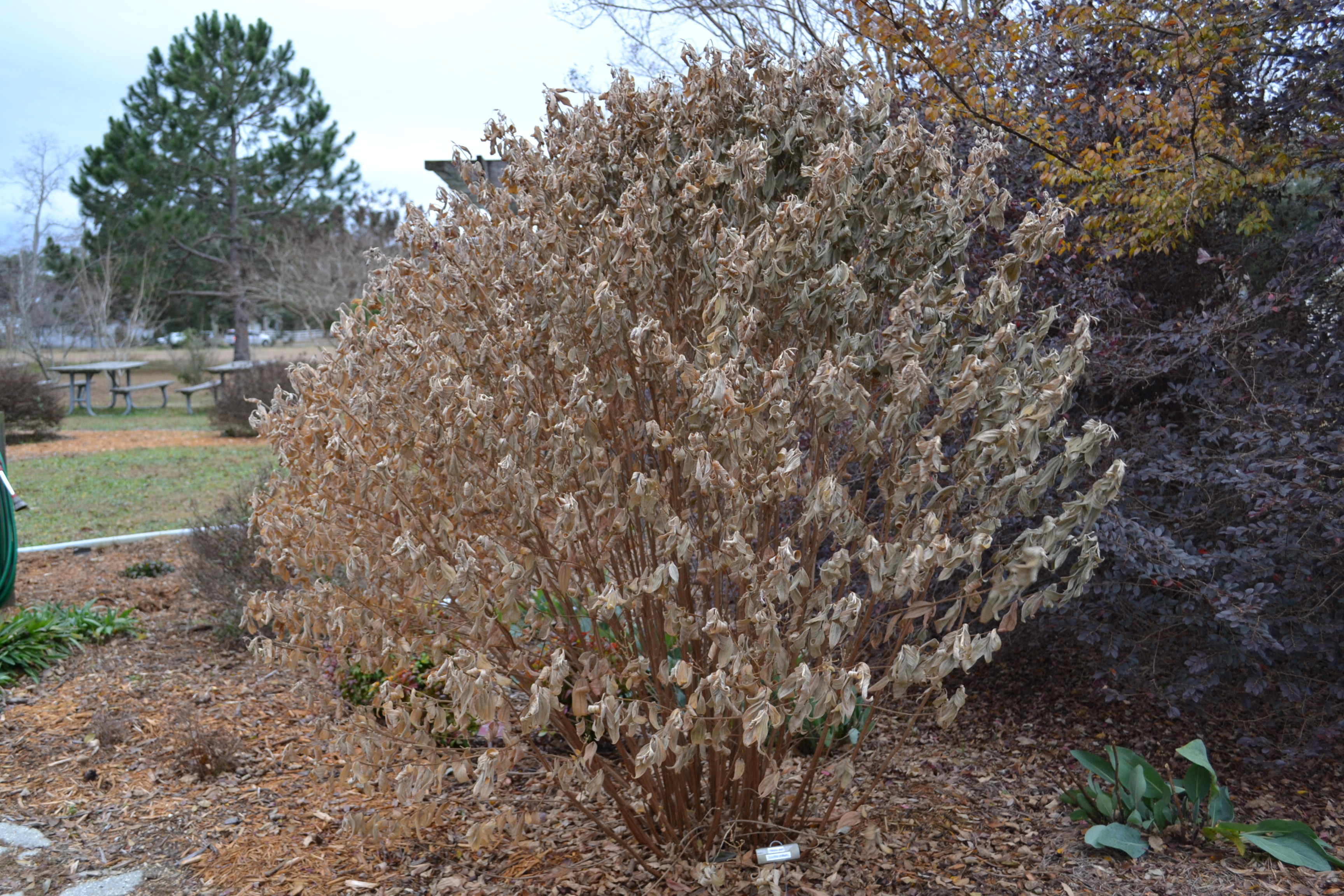
by Matthew Orwat | Feb 10, 2016
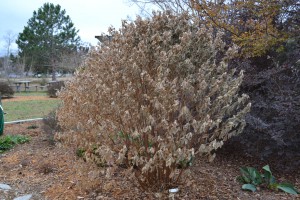
Image Credit: Beth Bolles
Although it is quite cold outside right now, spring is just around the corner. Many of us have perennials we enjoyed all summer and fall, and have been faced with their ugly dead stalks all winter. Perennials that are meant to die to the ground each winter look ugly and decayed after the first frost. For many perennials, the stalks have been left up and allowed to slowly die, allowing nutrients to be slowly translocated to the root system.
Many perennials, such as hibiscus species, hydrangea, salvia species, firebush (Hamelia patens), rudbeckia, echinacea, lantana and others still have a large amount of starch stored in their branches, even after the first frost. Although it was very tempting to remove these unattractive reminders of the beautiful spring gardening season, hopefully you waited to allow the starch to translocate (move) down to the root system.
Now through early March is the time to remove those unsightly dead branches to living tissue. To determine if there is “life” left in those burned and singed stems, just scratch off the top layer of the stem. If any nutrients remain in the stem, it will be green or yellow where the scratch was made. Another good way to determine if it is a good time to cut perennials back, since coastal and inland locales differ climactically, is to observe the beginning of new growth and trim at that time. If it is brown it’s dead, cut it back!
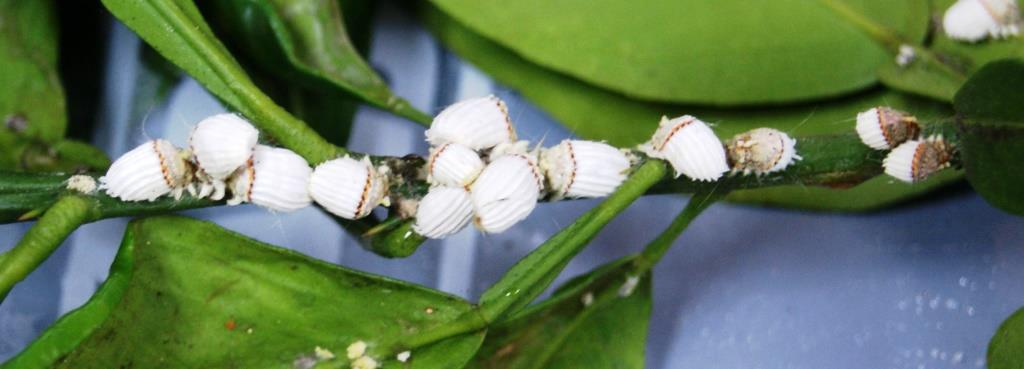
by Matthew Orwat | Jan 13, 2016
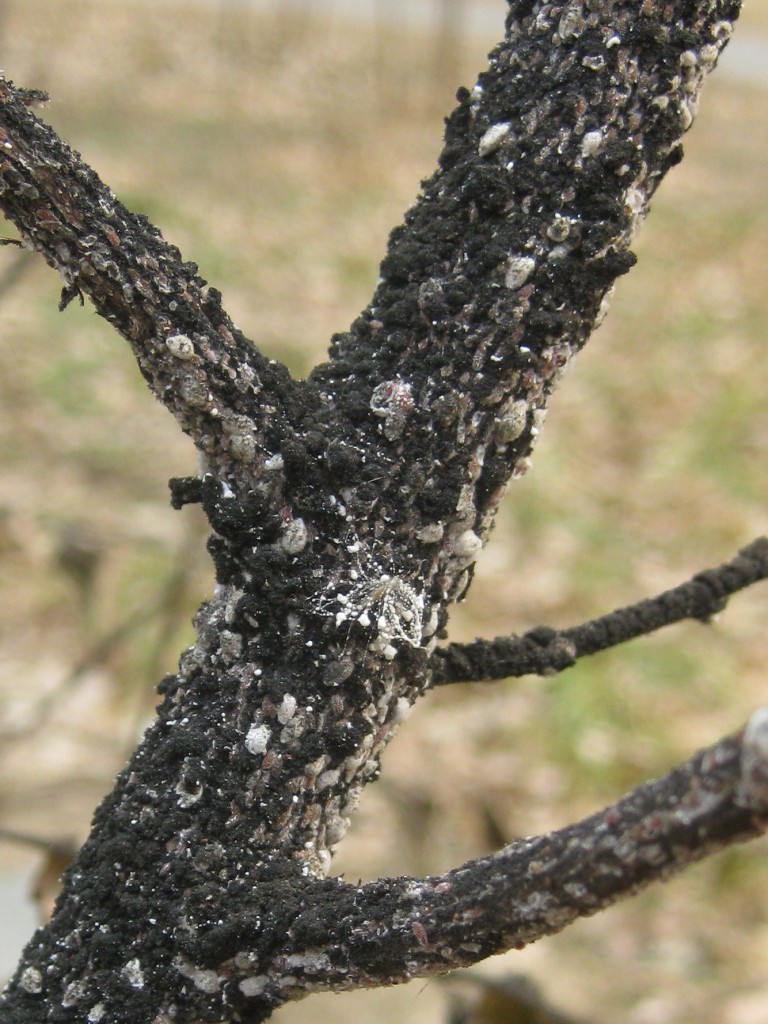
Crapemyrtle Scale, UF / IFAS Extension
During cold January weather, one doesn’t often think about spraying fruit trees and ornamental shrubs for spring insects and diseases. It’s just not on the radar. The fact is January and February are the best time to apply dormant sprays to combat insect and disease issues. Many ask, “What are dormant sprays” ?
Dormant sprays act on insects or disease pathogens differently. Many insects overwinter on trees and shrubs, either as eggs or immobilized in a protective shell (scale insects). Horticultural oils applied during cool dormant conditions work by smothering the eggs of some insect species or encapsulated scale insects. Since they cannot breathe, they die.
On the other hand, dormant sprays containing copper or sulfur actually kill latent fungal spores that are ready to infect the moment weather warms. They also burn tender young plant tissue, so can only be used when the plant is not actively growing. These preventative sprays can delay disease incidence in early spring and allow for reduction or elimination of regular fungicide applications. The old adage “an ounce of prevention is worth a pound of cure” surely applies to these situations.
There are several products on the market for dormant applications.
Dormant oil is a type of horticultural oil, made of refined petroleum products, for application on trees or shrubs when the trees are not actively growing. It has been in use for over 100 years. They are effective in the suppression of scale insects and mites. Care must be used to not apply them when daytime temperatures are above 75 degrees or night temperatures below 28 degrees. Other horticultural oils exist that can be applied during the growing season to control soft-bodied insects, but not during extremely hot weather. Many different brands exist, some are certified organic by OMRI. They can be purchased at most garden centers, but the best selection is usually found at your independent nursery or farm store.

Cottony Cushion Scale, Image Credit, Matthew Orwat, UF / IFAS Extension
Dormant fungicides can be classified into two groups. Those that contain copper and those that contain sulfur. The most common preventative remedy for fungal disease is lime-sulfur. It is applied to dormant plants and actually sanitizes the stem, killing all fungal spores. It cannot be used during the growing season since it burns leafy tissue. Caution must be taken when mixing and loading since, being an acidic product, can burn the skin. Wear chemical resistant gloves when applying (bought at your local hardware store for $4.00-$10.00), safety goggles and follow all label directions carefully. Also, never apply lime-sulfur within one month of horticultural oil applications. It should be applied in early to mid February, avoiding hard freezes for the 24 hours around application time.
Dormant copper sprays are effective on both bacterial and fungal pathogens and used primarily on fruit crops for the suppression of many fruit diseases including fire blight, bacterial leaf spot, powdery mildew, downey mildew and anthracnose. One popular option, the “Bordeaux Mixture” blends copper with lime. This lime reduces the acidic nature of the copper, thus reducing tissue damage when applied to plants. Always read the label for proper personal protective equipment and dosage rates, to avoid copper toxicity.
For more information, contact your local extension agent or consult these extension publications from: Disease Management Strategies, and Pest Control Using Horticultural Oils .




















